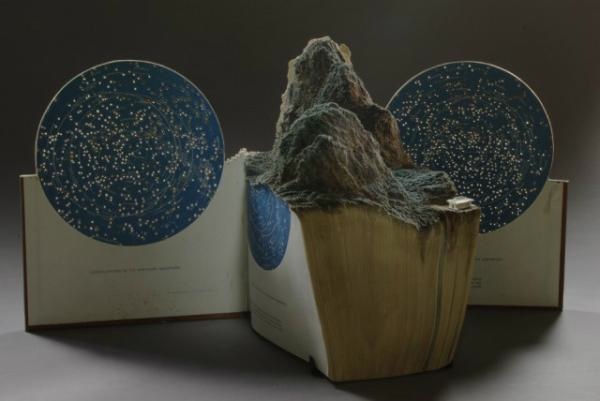When I was a child,Hizoban Higasa no onna computers were a fixture in my home, from the giant Atari on which I learned my ABCs, to the Commodore Amiga that my dad used for his videography business, to the PC towers that facilitated my first forays onto the internet. But tech was still a niche hobby back then. Even in college in the late 1990s and early 2000s, many of my friends got by just fine without computers.
For people in college now—namely, my students—things are decidedly different. Gadgets are everywhere, and are increasingly designed to insert themselves into every aspect of our consciousness, colonizing every spare moment of our time and attention. Gen Z and Gen Alpha have never known a world without mini-computers within arm’s reach. They learned to relate to the world through gadgets, to turn to them for everything from entertainment to education to escape. And when the COVID-19 pandemic disrupted their lives, it took away even more of their access to the offline world, making tech feel paradoxically both like a lifeline and a prison.
It's easy to call young people “screenagers” and blame them for being glued to their devices. But I know better. My students feel conflicted; they know they’re hooked, and they worry for their younger siblings who seem even more in the grip of all-consuming tech.
Several years ago, it occurred to me that I could do something to help. I began requiring students to put away all devices, including laptops and tablets, in my classes. It was an experiment both for them and for me: What happens when we remove the barrier tech has put between us and other people, between us and our own thoughts? What does that teach us about how to handle the explosion of hype around generative AI?
My own journey with tech predates our always-on devices, way back to that old Atari. I had always been a little obsessed with gadgets, and when I bought my first iPhone in 2008, it was almost a religious experience.
My wife and I were living in New York City, and my entire family drove down from Boston to witness my initiation. Like pilgrims, we journeyed together to the flagship Apple Store on Fifth Avenue. We all stood in reverence at the foot of the spiral staircase, beneath the illuminated glass cube, as I was welcomed into the cult of Apple.
From then on, almost without fail, I’ve upgraded my phone annually, a September ritual as cyclical for me as going back to school. And it wasn't just the iPhone; I had the first or second iteration of the iPad, AirPods, and the Apple Watch, too. Back then it felt like Steve Jobs might announce something that would reshape the world every time he stepped on stage.
But in the 2010s, something started to change. Underwhelming new tech releases grew increasingly common, and the constant hype around them began to feel empty and manipulative. As both a college professor and a parent, I began to see the benefits of our always-connected devices becoming overshadowed by the negatives. The young people in my life are obsessed with their gadgets, legitimately afraid they’ll be disconnected from society if they aren’t extremely online, and they hate it. Many worry as much as their parents do about their phone use.
So, even before the hype that greeted the AI revolution of the last few years, I’d begun to look a lot more skeptically at claims that tech was changing our lives, and that more apps, devices, or wearables were automatically better.
One day, near the end of the spring semester in 2019, I looked out at my class to see rows of students focused intently… on their laptop screens. They presumably had their devices out to take notes, but I wasn’t lecturing. I was trying to lead them into a discussion. This moment for me is trapped in time: It was the moment I decided I had to take drastic measures to recapture my students’ attention.
 Meet industry creators, contributors, and thought leaders who have paired with Mashable’s award-winning staff to publish first-person commentary from lived experience.
Meet industry creators, contributors, and thought leaders who have paired with Mashable’s award-winning staff to publish first-person commentary from lived experience. 


 Meet our contributors
Meet our contributors The following fall, my syllabus included a new section, which has remained in place since. I call it my in-class technology use policy and it begins, “This class is a laptop/mobile phone/tablet/headphone/AirPods-free zone. Bring a notebook and pens to each class.” I explain my reasoning and, like a good academic, cite my sources. I provide exceptions for emergencies, explaining that if a student has to take an urgent call, they can quietly slip out of the classroom to do so without judgment or penalty.
That first fall, I was nervous. Would they go along with it? Would my classes, previously well-loved, suddenly struggle to fill? To my great relief there was no significant pushback, no mass exodus. Going tech-free is still a shock, to be sure.At the start of each semester, an hour and fifteen minutes without a phone seems impossible for many students. But in time, most find it to be a relief. It gives them permission to take a break from the requirement to be always connected, always reachable, always on. Hopefully, it also creates space for deep and sustained thought.
I begin most classes by distributing an article to read—often a recently-published opinion piece—printed on paper. I encourage students to read it with pen in hand, marking it up as they go. As they read quietly, I look around the room at a group of so-called screenagers concentrating, without a device in sight. When they finish reading, they open their notebooks and write a response, by hand. In those first few weeks, I often see students massaging their palms, sore from lack of practice. After they write for five minutes or so, I open a discussion on what we just read and, distraction-free, the students engage.
In those discussions, I love that my students are actually paying attention to one another when they speak. Not everyone of course; some look sleepy and bored, but even that is better than distracted. I call this productive boredom: Without a phone or laptop to divert them, there is little left to do other than sit with their thoughts. What a gift. I ask them, “When was the last time your only task was to think?”
This experiment with a device-free classroom has also shaped my response to the AI revolution (I sometimes think of it more as an AI invasion)that has swept higher education since the debut of ChatGPT in 2022. Like smartphones before them, AI tools are wrapped in revolutionary rhetoric, trying to convince all of us that we’ll be left behind if we don’t drop our old habits overnight and jump on the bandwagon.
I’m not a luddite: I continue to be as curious about new technologies as ever. As soon as it came out, I peppered ChatGPT with questions to see if it could imitate my writing style. (It kind of can!) And I know there’s no going back; whether we like it or not, AI will be a significant presence in our lives, and I see it as my job to teach students how to use it responsibly. In my long journey with tech, I’ve learned that we can incorporate devices into our work without surrendering to marketing hype and manufactured FOMO.
As a writing professor, my job is to convince students that, as William Zinsser wrote, “writing is thinking on paper.” The processof writing — not the final product — is what sharpens our logical reasoning and self-expression. For students who don’t use AI in smart ways, the result is essays that are all product, no process — and no process means no real learning.
In my classes, students glimpse a time before they were born, when fewer distractions inhibited learning, when sitting with one’s thoughts—and, yes, being bored—could be productive and creative. I’m reminded, too, of why I love teaching, for the magic that happens when 20 people sit together in a room attending to one another and talking about ideas.
When we leave the classroom, we’ll go back to our devices, and even to our new AI tools. But hopefully the time away from them reminds us we have the power to keep tech in its place—and gives us a taste of what only human minds can do.
Topics Artificial Intelligence ChatGPT
 Best keyboard deals: Save on Asus gaming keyboards at Amazon
Best keyboard deals: Save on Asus gaming keyboards at Amazon
 “Thule, the Period of Cosmography”: An Illustrated Panorama by Jason Novak
“Thule, the Period of Cosmography”: An Illustrated Panorama by Jason Novak
 Twitter is removing view count metrics from videos
Twitter is removing view count metrics from videos
 'Vanderpump Rules' reunion: The most Scandovalous quotes
'Vanderpump Rules' reunion: The most Scandovalous quotes
 Exceptionally rare radio sources detected in the distant universe
Exceptionally rare radio sources detected in the distant universe
 'Tears of the Kingdom' duplication glitch removed by patch, but there's a workaround
'Tears of the Kingdom' duplication glitch removed by patch, but there's a workaround
 'You Hurt My Feelings' review: Julia Louis
'You Hurt My Feelings' review: Julia Louis
 Letter from India: The Permit, Part 1 by Amie Barrodale
Letter from India: The Permit, Part 1 by Amie Barrodale
 NYT Connections hints and answers for May 10: Tips to solve 'Connections' #699.
NYT Connections hints and answers for May 10: Tips to solve 'Connections' #699.
 Bookscapes, Book Gardens by Sadie Stein
Bookscapes, Book Gardens by Sadie Stein
 Prabuddha Dasgupta, 1956–2012 by Sadie Stein
Prabuddha Dasgupta, 1956–2012 by Sadie Stein
 Obama says he has a finsta and now everyone is trying to find it
Obama says he has a finsta and now everyone is trying to find it
 Bullet Points by Joseph Bernstein
Bullet Points by Joseph Bernstein
 English Smocks by Sadie Stein
English Smocks by Sadie Stein
 Bullet Points by Joseph Bernstein
Bullet Points by Joseph Bernstein
 Watch: Nicholson Baker Sings About Jeju Island by Sadie Stein
Watch: Nicholson Baker Sings About Jeju Island by Sadie Stein
 Best robot vacuum deal: Save $140 on roborock Q7 Max Robot Vacuum
Best robot vacuum deal: Save $140 on roborock Q7 Max Robot Vacuum
 Speaking the Language by Michael Spies
Speaking the Language by Michael Spies
Seas level rise may be twice earlier estimates, dooming coastal citiesFacebook launches Snooze to mute annoying friends for 30 daysAnonymous Bitcoin whale promises to give $86 million to charityVR app lets you explore a theatre in a Cyprus' ancient capitalScarlett Johansson returns as Ivanka Trump on 'Saturday Night Live'Two scholarly brothers get accepted into their dream schools in heartwarming videosGoogle rolls out Assistant to tablets and Android Lollipop phonesAmerican Airlines tried to charge a mother $150 for traveling with breast milkMark Hamill and Rian Johnson remember Carrie Fisher on 'The Last Jedi''Star Wars: The Last Jedi' ending: Here's what happenedJustin Trudeau reviewed 'Star Wars: The Last Jedi' in six words and we're soldDear Disney: Now you own the original 'Star Wars', please bring it back in all its gloryRudolph is the only good reindeer'Star Wars: The Last Jedi' finally revealed Rey's parentsRudolph is the only good reindeerTwo scholarly brothers get accepted into their dream schools in heartwarming videos'The Last Jedi' had the second biggest Thursday opening everSomewhere in Las Vegas, there's a warehouse containing debris from UFOsJustin Trudeau reviewed 'Star Wars: The Last Jedi' in six words and we're soldAmazon to sell Apple TV, Google Chromecast streaming devices BBC morning show hosts introduce wrong guest live on air Meryl Streep, Tom Hanks, Solange and more attend the Obamas' farewell party The most excessive tech at Day 3 of CES 2017 Key & Peele salute Obama with perfect final 'Anger Translator' sketch This is what you look like from Mars Facebook brings in a new head of news partnerships Terrified swimming elephant stays afloat in a fantastic Photoshop battle Clarity promises to be Mint and Digit, combined People have figured out how to make naughty art with erasable ink and hairdryers Prosthesis is a huge, terrifying exoskeleton built for real Hulu's 'Handmaid's Tale' trailer is as horrifying as it is beautiful There's a room with a bunch of dudes watching VR porn at CES Here are 25 speedruns worth watching this week WikiLeaks threatens to build a database of verified Twitter users Yahoo accidentally tweeted a racist slur and Twitter is dragging them CES 2017: SwagSurf is like a hoverboard for the ocean News broadcast about Alexa ordering a dollhouse makes Alexas order dollhouses Indonesia sets up agency to combat fake news Ed Sheeran's new song is hiding in a Snapchat lens The best tech at CES you probably can't afford
2.7024s , 10156.8515625 kb
Copyright © 2025 Powered by 【Hizoban Higasa no onna】,Co-creation Information Network